Newsletter writing is a constant endurance test. Coming up with ideas every week gets trickier as you release more issues. The topic well starts to run dry, and you start looking for ways to keep generating them.
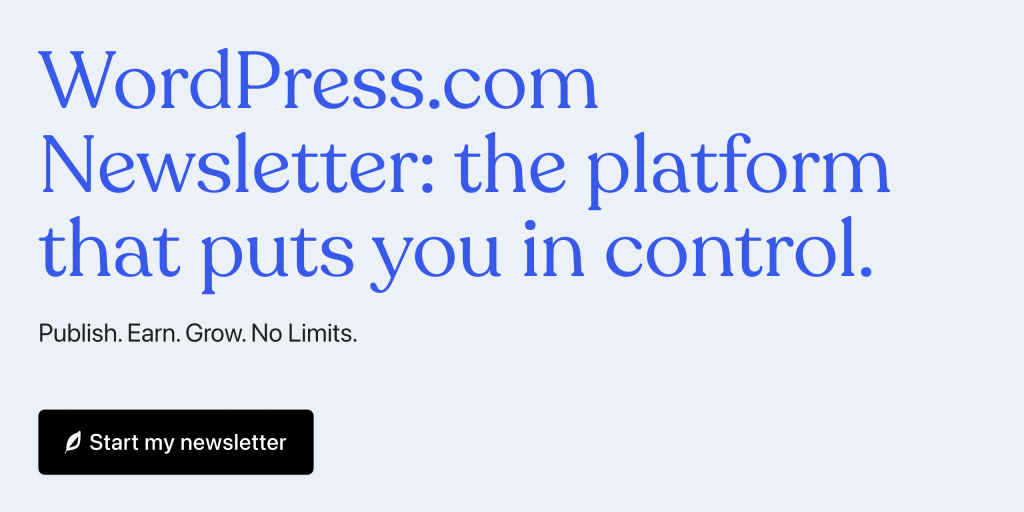
This blog post has more than 150 newsletter ideas to inspire you throughout the year. Best of all, many of them are repeatable to fill out your editorial calendar. You’ll get some ideas to use year-round and others to write for certain times of the year.
In this article:
- Year-round newsletter ideas
- Tell a personal story
- Share thoughts on a recent news story
- Round up interesting links you’ve read recently
- Interview an expert in your subject area
- Write a “best of” list
- Send a roundup of your most popular newsletter issues
- Send a poll or survey to your readers
- Share a recent blog article
- Compile a list of your best tips
- Round up interesting tweets
- Recommend other newsletters
- Explain how to do something that you’ve learned
- Share interesting research/stats
- Or share your own research findings
- Predict what you think will happen in your subject area in the future
- Write a product review or compare two products
- Ask your readers a question, then share their answers
- Share an opinion that goes against conventional wisdom
- Offer a coupon or something for free
- Attend an event and share a recap
- Discuss something that’s trending in your niche
- Answer questions frequently asked on Google
- Share a story from one of your newsletter readers
- Write a behind-the-scenes story
- Write a travel story related to your niche
- Teach a lesson you’ve learned from experience
- Share your favorite seasonal recipes
- Create a checklist of must-have items
- Send your readers a free template
- Write about something that happened in history from a new or unique angle
- Share a roundup of the best podcasts in your niche or industry
- Or a roundup of the best YouTube channels
- Let a guest author write a newsletter issue for you
- Or guest on another writer or brand’s newsletter
- Monthly newsletter ideas
- Make newsletter creation easier with the WordPress editor
Year-round newsletter ideas
Visit this list of ideas when you need a newsletter topic at any time of the year:
Tell a personal story
Personal content gives your readers a human to associate with your newsletter. A story about your past or daily life can make your email more memorable.
If you run a newsletter for a business, you can also integrate your story with a promotion or curated product collection. For example, Penzeys Spices sold a special spice box for the founder’s 20th wedding anniversary, and he shared personal anecdotes about his marriage throughout the promotion.
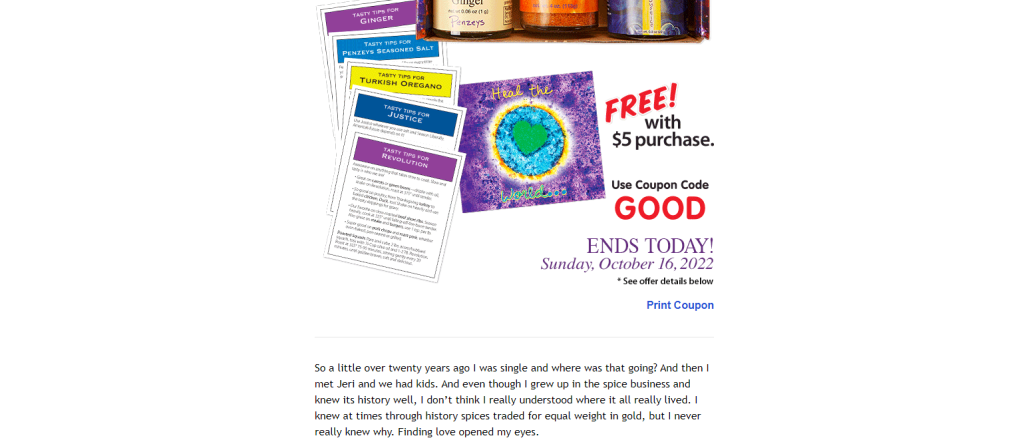
Share thoughts on a recent news story
Newsletters are a timely medium, so why not embrace that nature by mentioning recent events in your issues?
If you want to keep your tone light, this practice doesn’t mean you have to cover a heavy subject like politics or world-changing events. Maybe there’s a new dance taking over TikTok, or your favorite product’s packaging changed.
Round up interesting links you’ve read recently
Many newsletters headed by a single person include a section for interesting articles they read since the last issue. You can join in on this practice whether you have a solo or team operation.
Use an app like Pocket or browser bookmarks to save any good reads you come across. Then, when it’s time to write your newsletter, you’ll have them on hand to turn into a list.
Interview an expert in your subject area
Inviting experts to interview for your newsletter is a win-win situation for everyone. You get original content from a new perspective, and the expert gets exposure in a new place.
Some newsletters make these interviews a staple, like Masooma Memon’s Content Workshop. She uses a repeatable formula for the questions she asks interviewees, highlighting their different approaches to content.
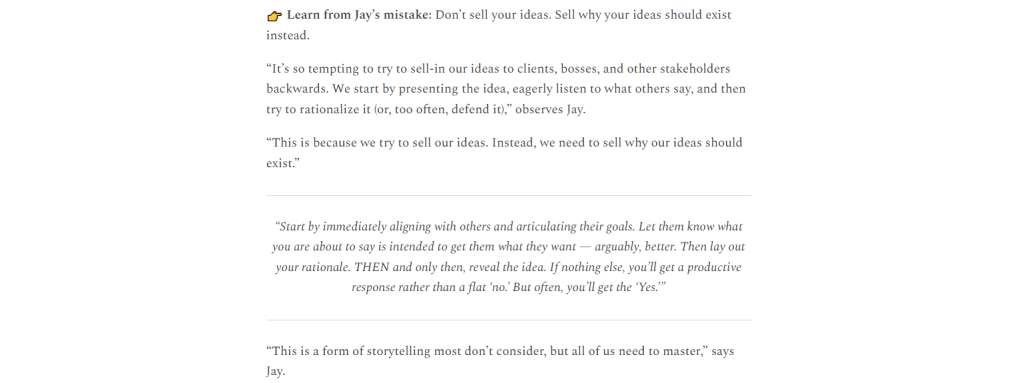
Write a “best of” list
This classic listicle format for blog posts also works well for newsletters. Think of the best items in a category, such as articles about a subject or products that serve a certain purpose. Then, organize them into a list with clear sections and visuals.
Send a roundup of your most popular newsletter issues
Once you have a solid backlog of newsletter issues to work with, you can use it to create new content. Check your newsletter platform’s analytics to find your most popular issues, then share a list of them with new commentary. This format works especially well for the end of the year and milestones like your newsletter’s anniversary.
Pro Tip: Even if you decide not to use the roundup newsletter format, watching analytics is key to your newsletter’s success. Keep an eye on those numbers.
Send a poll or survey to your readers
Let your readers get in on the fun by sending a survey or poll to your subscribers. Ask them about their favorite newsletter topics, their general interests, or fun details like their favorite hobby.
From there, you can use their answers to inform future issues or share in your next issue.
If you need a survey tool to get started with, WordPress.com is integrated with Crowdsignal. Crowdsignal makes it easy to run surveys, quizzes, and polls, either on your website or via email.
Share a recent blog article
Many company newsletters update readers on the latest posts to appear on the company’s blog. You can share your recent content in a dedicated issue or do it to supplement issues on other topics.
Freshbooks has a dedicated blog newsletter that rounds up its latest articles:
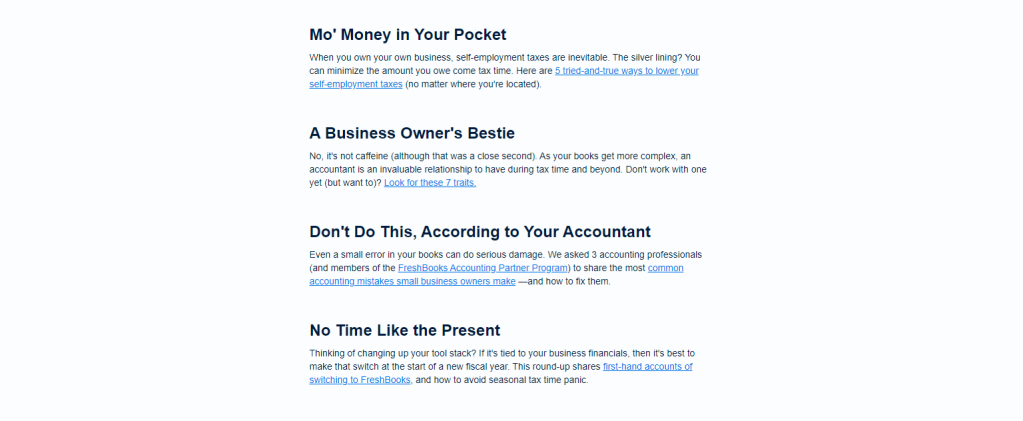
Compile a list of your best tips
People read newsletters because they want to learn someone’s opinion or expertise. Compiling your best advice in one of your newsletters addresses that desire and builds your authority in your niche. (Of course, make sure your tips relate to your main subject area in the first place.)
If you’re stumped on what tips to share, search topics related to your niche on social media to see what questions they have. You might also have questions you get from your readers, customers, or followers.
Round up interesting tweets
When you work in a niche with an active Twitter community, the tweets available on the subject make a great source of inspiration. Use Twitter’s bookmark function to save good tweets over time, then round them up in a newsletter issue.
You could also regularly highlight tweets as part of your newsletter format, like Peak Freelance:

Recommend other newsletters
Give your readers some newsletter reading recommendations by listing other newsletters you find interesting. Share good newsletters in your niche or suggest ones you like to read yourself.
Explain how to do something that you’ve learned
Nothing beats first-hand experience. Tell your audience how to do something you learned yourself to spark their interest and build their trust.
You can make an entire newsletter out of this practice, like Adrienne Smith’s newsletter sharing her content marketing tips based on experience:

Share interesting research/stats
Find any fun facts as you do research for work or learn more about your niche? Share them with your newsletter readers and explain their relevance to what you do.
If you’d like to incorporate more stats and research into your newsletter, try searching “state of (topic)” to find reports or pay attention to news in your subject area.
Or share your own research findings
Newsletter creators that do original research as part of their jobs have a goldmine of content to work with. Share the highlights from a recent report. Or create a series of issues based on your research findings with each issue elaborating on one.
Predict what you think will happen in your subject area in the future
This newsletter concept works well if you have deep expertise in your subject area. Based on your experience in your niche, predict future trends. You could make predictions at the end of the year for the next year or think forward to the next few months.
Write a product review or compare two products
Review a product relevant to your newsletter topic or compare two of them to mix up your issues. Note that the products in question don’t have to be physical — they can be software or digital downloads as well.
For guidance on writing a product review or comparison, check out our blog post templates and their accompanying tips. Then, structure your newsletter issue like a micro-blog post.
Ask your readers a question, then share their answers
Here’s another way to collaborate with your readers on your content. Ask them a question through your newsletter or social media, then share your conclusions on their answers in your next issue.
Your question can be funny or serious. For example, you could debate how you cut a sandwich or ask about what direction to take your newsletter.
Share an opinion that goes against conventional wisdom
In the content world, we often focus on following best practices or search engine trends to keep up. These habits make it easy to build on conventional ideas instead of thinking about what you can bring to the table.
Consider what unique opinions you can bring to your niche. Sometimes, all it takes is sharing what you genuinely believe, as Justin Pot does in his newsletter. His ideas, like “never apologize for being offline,” come from his experience, not from trying to be counterintuitive.
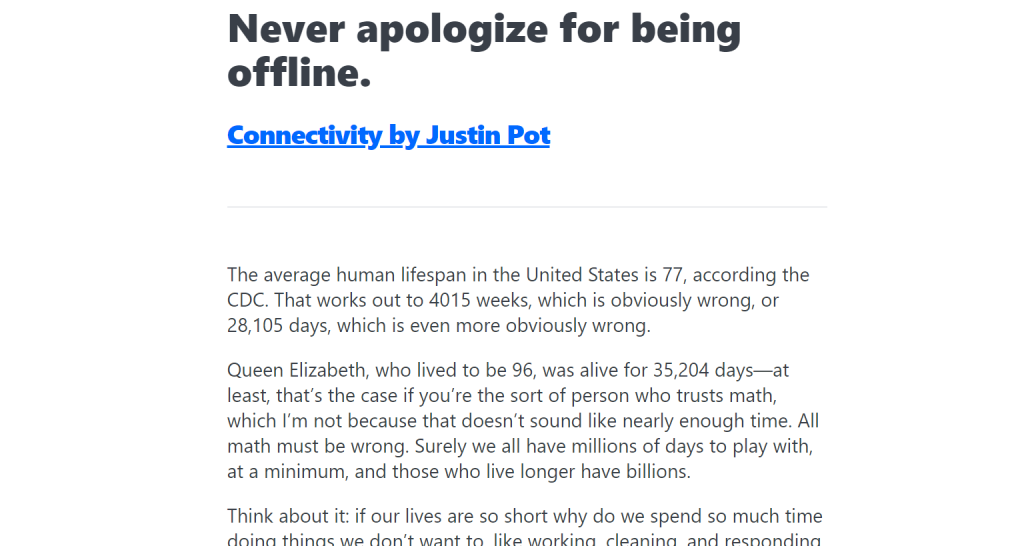
Offer a coupon or something for free
Deals bring old customers back and make your entry point more accessible for new customers. Even if you don’t sell physical items, you can offer a free resource or partner with another business to provide a coupon.
Take inspiration from ecommerce deal emails for your copy and design. Use graphics and text that stands out to direct readers to your coupon, like in this email from Stash Tea:
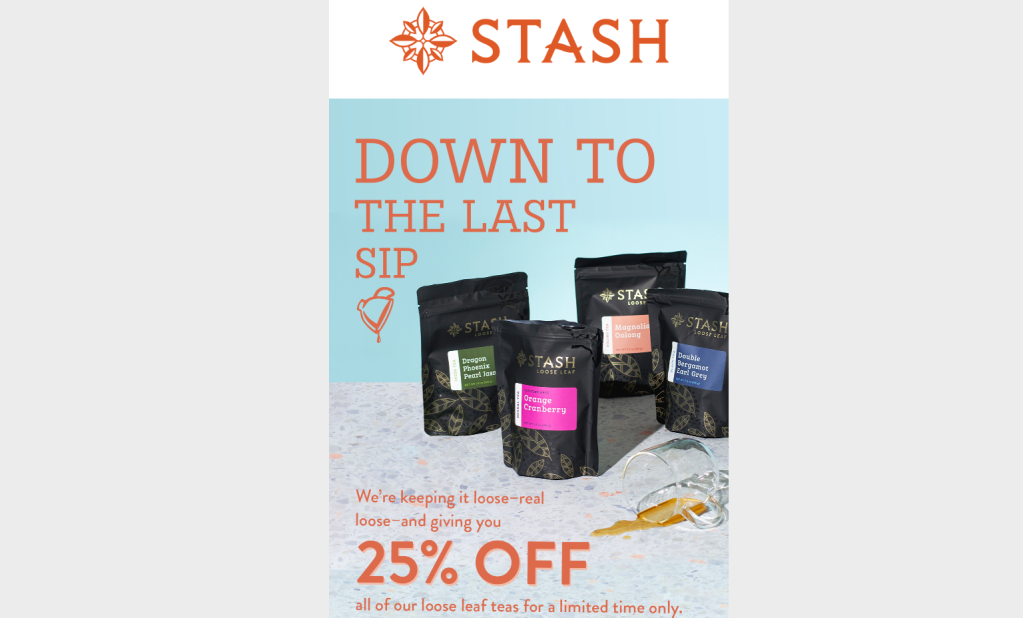
Attend an event and share a recap
Got something exciting going on in your area of expertise or interest? Let your readers in on the fun by attending and writing an exclusive recap. Your event recap issue could include your personal experience with the event and cover any major beats.
Bonus points for taking original pictures to go along with your issue. (With any required permission, of course.)
Discuss something that’s trending in your niche
Pay attention to the topics people in your niche talk about and share your take on them in your newsletter.
How can you tell what’s gaining traction? You can plug keywords related to your subject area into Google Trends to see. Or, you could check on Twitter by visiting the Explore tab or looking at the topics on the right-hand side of your desktop feed.
Answer questions frequently asked on Google
Google’s algorithm lends itself to connecting the questions people ask. You can use this technology to inspire your future newsletter issues.
Search for a question related to your niche and see if there’s a “People also ask” section in the results. Here’s what I got searching “how do I build a fire”:
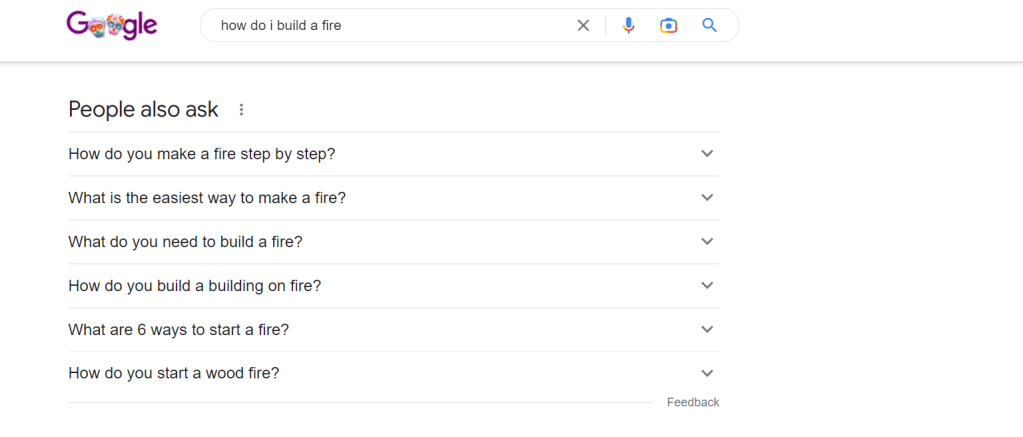
You can also see what Google autofills when you search a question to get related questions. Here are the results for the same term:
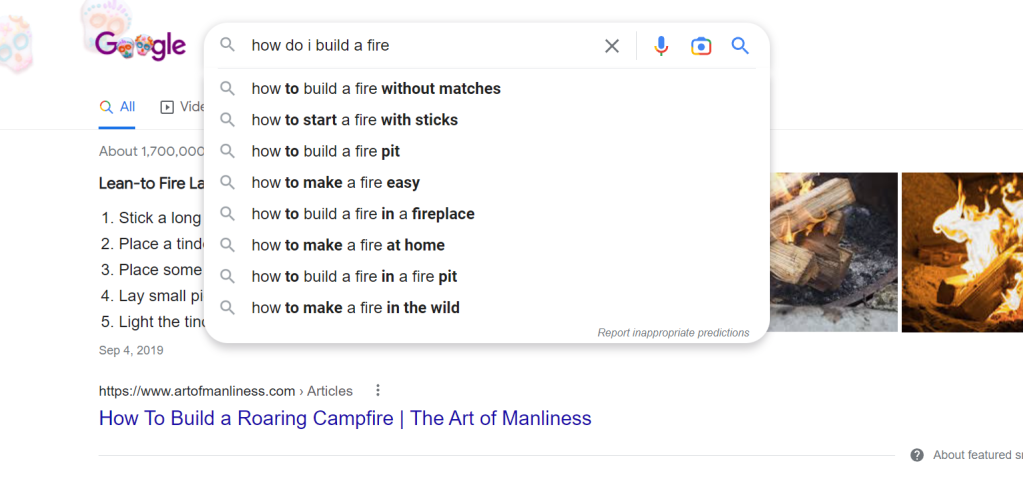
Share a story from one of your newsletter readers
As you send out your newsletter, you might find your readers sharing their experiences related to your content. (And if not, start asking your readers questions they can answer by replying to your emails.) With their permission, share their experiences and add your commentary in one of your future issues.
You can also share other personal tidbits from your subscribers’ lives, like in the “The Long Tail” sections in TTT’s Rich Snippets newsletter:
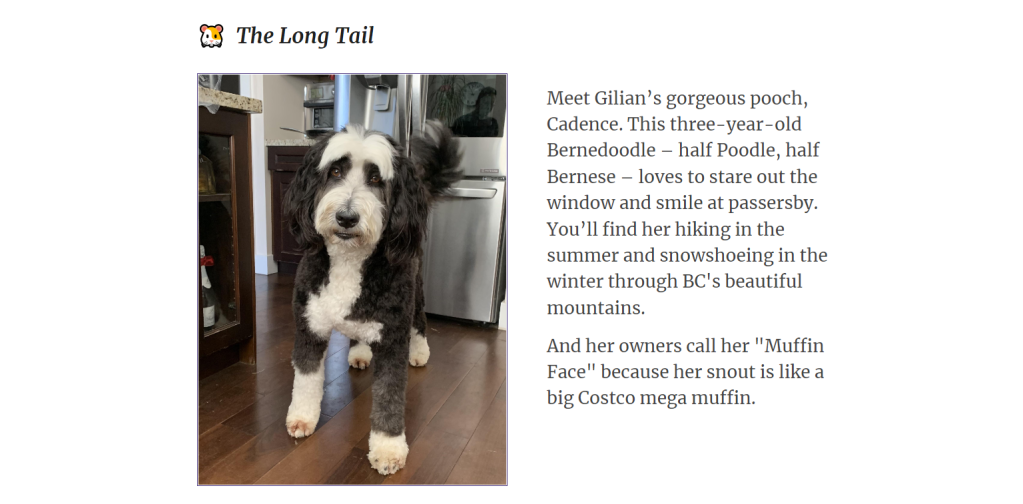
Write a behind-the-scenes story
While the happenings at your home or office are obvious to you, readers often don’t have a clue what goes on behind the scenes. Share glimpses into your life or work that subscribers don’t normally get.
If you run a newsletter for a company or organization, this newsletter topic gives you a great chance to collaborate with other departments. Show what your graphic designer or director of finance does to keep your team going.
Write a travel story related to your niche
Travel comes up in many subject areas, even if it doesn’t have a direct connection. If you go on a trip relevant to your newsletter topic, cover it in a future newsletter issue.
For example, if you write about a professional niche, you probably won’t get away with writing about your beach vacation. But, you could tell a story about your journey to a conference related to your subject area.
Teach a lesson you’ve learned from experience
What knowledge did you gain from experience in your subject area? Share those lessons with your readers. Those tidbits of knowledge will be more memorable thanks to their personal aspects.
For example, in one of his newsletters for Everyone Hates Marketers, Louis Grenier shared three things he was wrong about to teach a lesson:
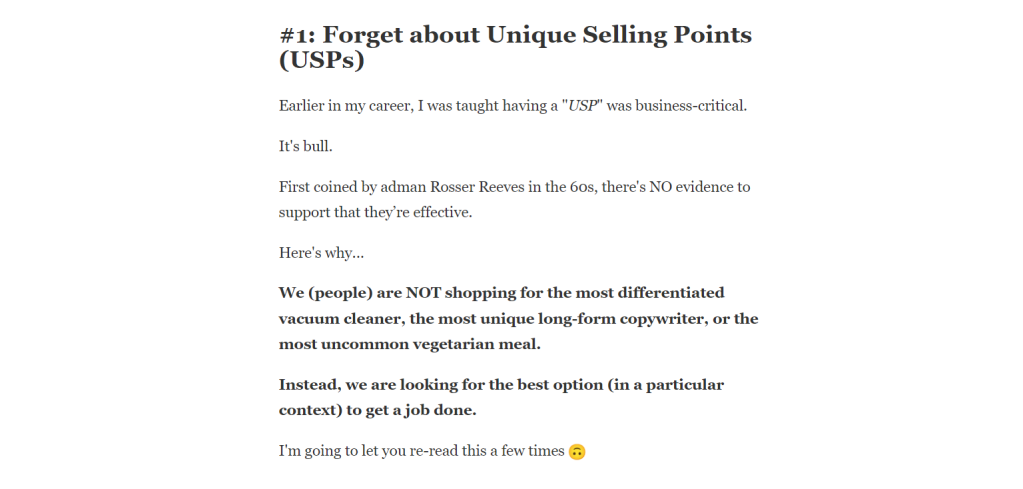
Share your favorite seasonal recipes
This topic idea works in very specific contexts, but when it does, it adds a fun touch to your content. If you already share personal anecdotes and interests in your newsletter, you can add seasonal recipes to your repertoire. And, of course, food newsletters will thrive with this subject.
Create a checklist of must-have items
What do your readers need to have to achieve their goals? Make a checklist of necessities for a situation relevant to your niche. For example, if you write about electronics, you could create a list of gadgets to bring on an outdoor trip.
Send your readers a free template
If you want to teach your readers how to do something or make their lives easier, free templates help you reach that goal. You can make templates for documents, emails, checklists, and other resources your subscribers use.
Plus, if you already have paid templates, people who download a freebie will get a taste of your capabilities.
Write about something that happened in history from a new or unique angle
When you need examples to use in your newsletter, the past has plenty to provide. Think of some of the historical events you find interesting and see if they have any lessons that connect to your niche. You could also share fun history facts in a recurring section of your newsletter if they work with the rest of your subject matter.
Share a roundup of the best podcasts in your niche or industry
Over the past decade, podcasts earned their place as a medium of their own. Add your favorite podcasts in your subject area to a dedicated feed in your podcast app. Then, once you have enough to write about, share them in an upcoming newsletter email.
Or a roundup of the best YouTube channels
My suggested tactic for rounding up newsletters also works for YouTube channels. Follow your preferred channels on your main YouTube account or a burner, then write about them.
Let a guest author write a newsletter issue for you
One route for collaboration in newsletter content is to ask figures in your subject area to become guest writers. Just like with interviewing, everyone can benefit.
Or guest on another writer or brand’s newsletter
You can also act as a guest author yourself for someone else’s newsletter. Keep an eye out for newsletters in the same niche as yours and offer to guest write for one
Monthly newsletter ideas
Turn to these holidays when you want to write something seasonal or fill out your newsletter calendar in advance. You can find more of them at National Today, including ones relevant to cultures all over the world.
January newsletter ideas
- New Year’s Day (1st)
- World Typing Day (8th)
- Home Office Safety and Security Week (8th-14th)
- International Parity at Work Day (11th)
- Organize Your Home Day (14th)
- International Hot and Spicy Food Day (16th)
- Tenderness Towards Existence Day (19th)
- Better Business Communication Day (23rd)
- Data Privacy Week (24th-28th)
- Global Community Engagement Day (28th)
February newsletter ideas
- International Boost Self-Esteem Month (1st-28th)
- Freelance Writers Appreciation Week (6th-12th)
- International Networking Week (6th-12th)
- International Week of Black Women in the Arts (7th-15th)
- International Day of Women and Girls in Science (11th)
- International Book Giving Day (14th)
- Annoy Squidward Day (15th)
- Random Act of Kindness Day (17th)
- World Day of Social Justice (20th)
- Telecommuter Appreciation Week (27th-March 3rd)
March newsletter ideas
- International Women of Color Day (1st)
- International Women’s Week (4th-7th)
- World Information Architecture Day (5th)
- International Women’s Day (8th)
- International Fanny Pack Day (11th)
- World Sleep Day (17th)
- International Read to Me Day (19th)
- International Color Day (21st)
- International Waffle Day (24th)
- World Data Backup Day (31st)
April newsletter ideas
- International Customer Loyalty Month (1st-30th)
- International Fact-Checking Day (2nd)
- World Party Day (3rd)
- International Be Kind to Lawyers Day (11th)
- International Haiku Poetry Day (17th)
- World Day for Animals in Laboratories (24th)
- World Penguin Day (25th)
- Stop Food Waste Day (28th)
- World Day for Safety and Health at Work (28th)
- International Astronomy Day (29th)
May newsletter ideas
- Zombie Awareness Month (1st-30th)
- World Press Freedom Day (3rd)
- Red Cross Week (4th-10th)
- Star Wars Day (5th)
- UN Global Road Safety Week (12th-16th)
- International Hummus Day (13th)
- International Day Against Homophobia, Transphobia, and Biphobia (17th)
- International Tea Day (21st)
- International Day for Biological Diversity (22nd)
- World Dracula Day (26th)
June newsletter ideas
- International Tabletop Day (3rd)
- World Caring Day (7th)
- World Food Safety Day (7th)
- Oxfam Water Week (11-17th)
- International Axe Throwing Day (13th)
- World Tessellation Day (17th)
- World Rainforest Day (22nd)
- UN Public Servants Day (23rd)
- International Day of the Seafarer (25th)
- International Asteroid Day (30th)
July newsletter ideas
- International Zine Month (1st-31st)
- World UFO Day (2nd)
- World Chocolate Day (7th)
- International Rock Day (13th)
- International Nonbinary Peoples Day (14th)
- World Day for International Justice (17th)
- International Chess Day (20th)
- Spoonerism Day (22nd)
- International Self-Care Day (24th)
- International Day of Friendship (30th)
August newsletter ideas
- World Wide Web Day (1st)
- International Beer Day (4th)
- International Day of The World’s Indigenous People (9th)
- Vlogging Day (10th)
- International Youth Day (12th)
- World Calligraphy Day (16th)
- World Photo Day (19th)
- International Homeless Animals Day (19th)
- International Strange Music Day (24th)
- International Lottery Day (27th)
September newsletter ideas
- World Letter Writing Day (1st)
- International Day of Charity (5th)
- Fight Procrastination Day (6th)
- World Literacy Day (8th)
- International Sudoku Day (9th)
- World Engineers Day (15th)
- Global Company Culture Day (18th)
- Talk Like a Pirate Day (19th)
- Love Note Day (26th)
- International Right to Know Day (28th)
October newsletter ideas
- International Coffee Day (1st)
- International Music Day (1st)
- World Space Week (4th-10th)
- International Day of Peaceful Communication (7th)
- World Post Day (9th)
- World Mental Health Day (10th)
- World Standards Day (14th)
- World Students’ Day (15th)
- International Capslock Day (22nd)
- International Animation Day (28th)
November newsletter ideas
- World Vegan Day (1st)
- World Freedom Day (9th)
- Go to an Art Museum Day (9th)
- World Usability Day (10th)
- International Fraud Awareness Week (12th-18th)
- International Tongue Twister Day (13th)
- World Kindness Day (13th)
- International Girls Day (14th)
- Steve Irwin Day (15th)
- International Cake Day (26th)
December newsletter ideas
- World Computer Literacy Day (2nd)
- World Wildlife Conservation Day (4th)
- Pretend to Be a Time Traveler Day (8th)
- International Day of Veterinary Medicine (9th)
- International Mountain Day (11th)
- International Shareware Day (11th)
- International Tea Day (15th)
- International Migrants Day (18th)
- International Dalek Remembrance Day (21st)
- New Year’s Eve (31st)
Make newsletter creation easier with the WordPress editor
Even as you use our newsletter ideas for inspiration, you’ll find that the process still takes time and dedication. Streamlining repetitive tasks like hosting and formatting will save you time for thought-intensive actions like brainstorming and writing.
Add a WordPress newsletter plugin to your site to handle website creation, blogging, and newsletter writing in one place. All your website and newsletter content will have a home at WordPress, making it easier to write and publish.
Want more tips? Get new post notifications emailed to you.

What You Need. Already There.
WordPress.com plugin-enabled plans come with built-in social sharing, in-depth stats, and SEO tools.

